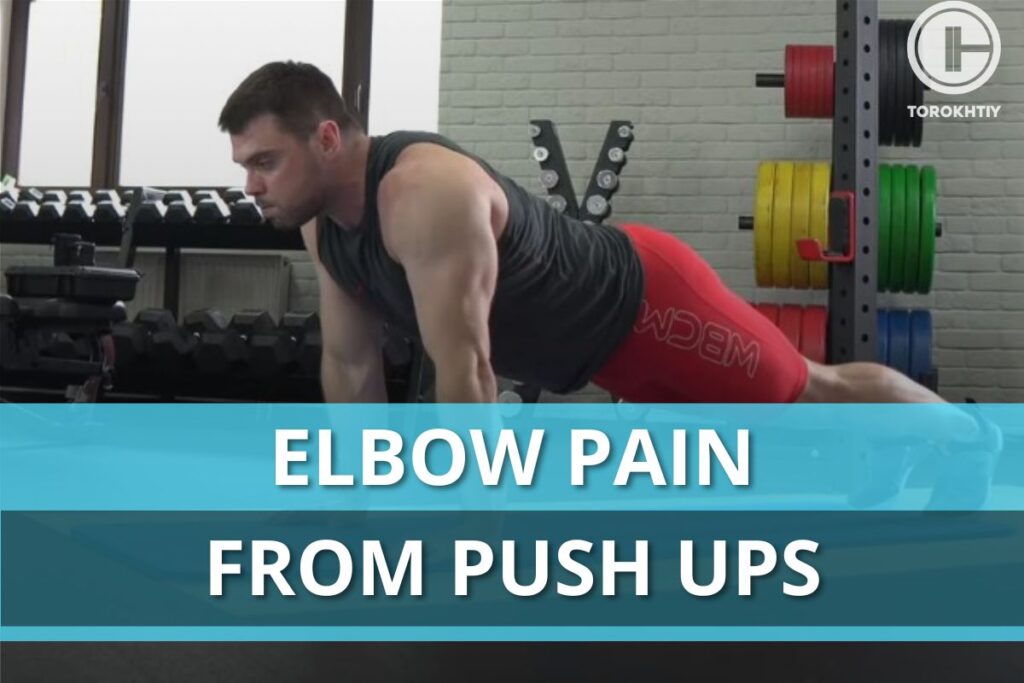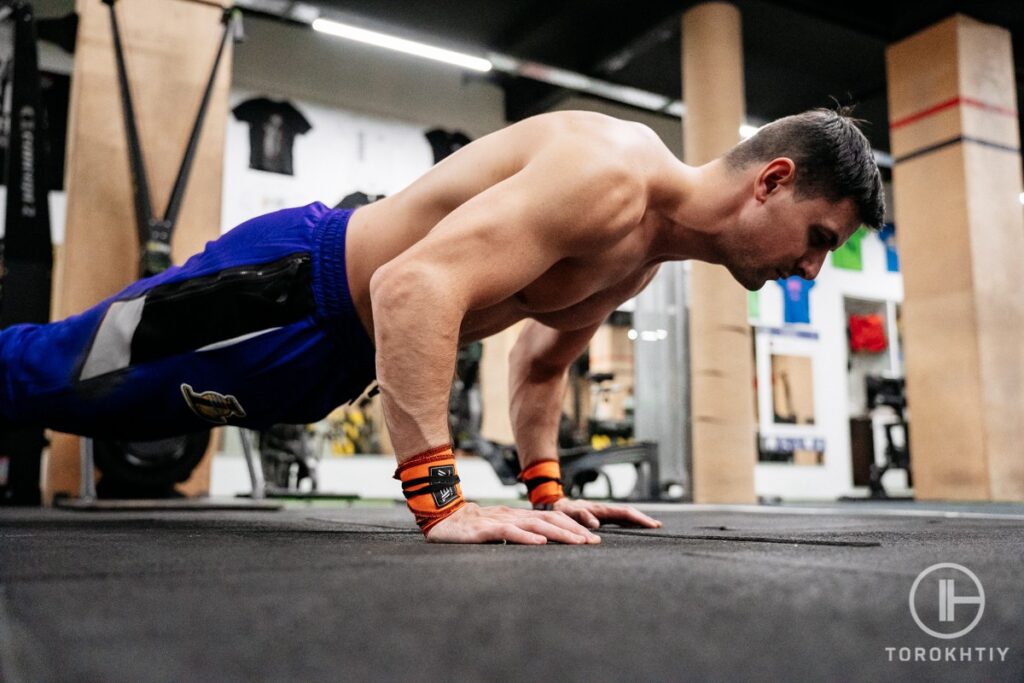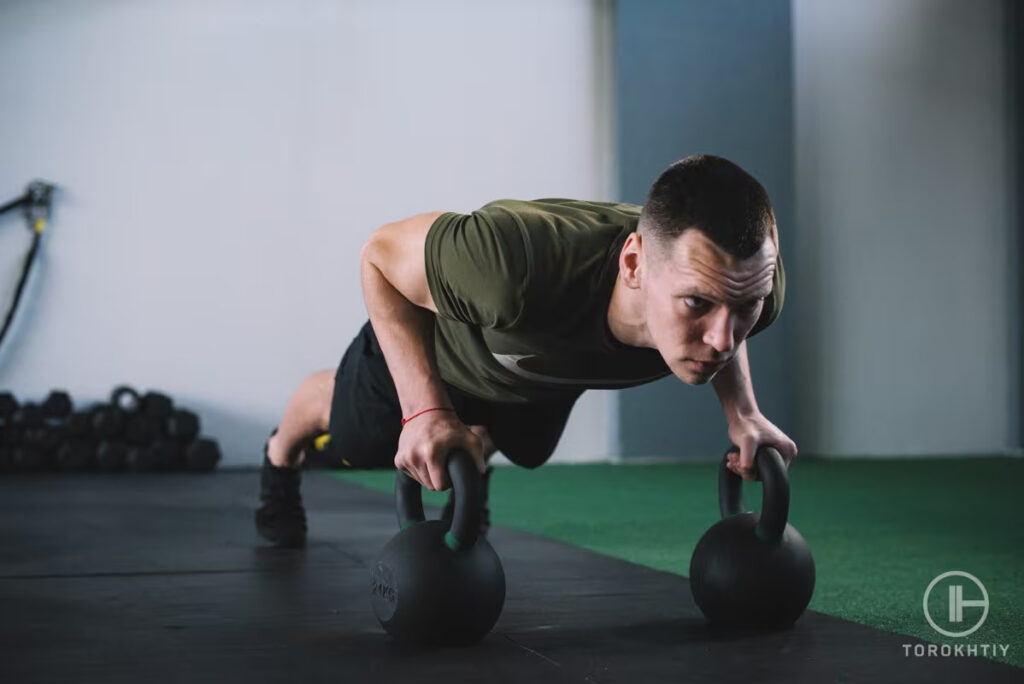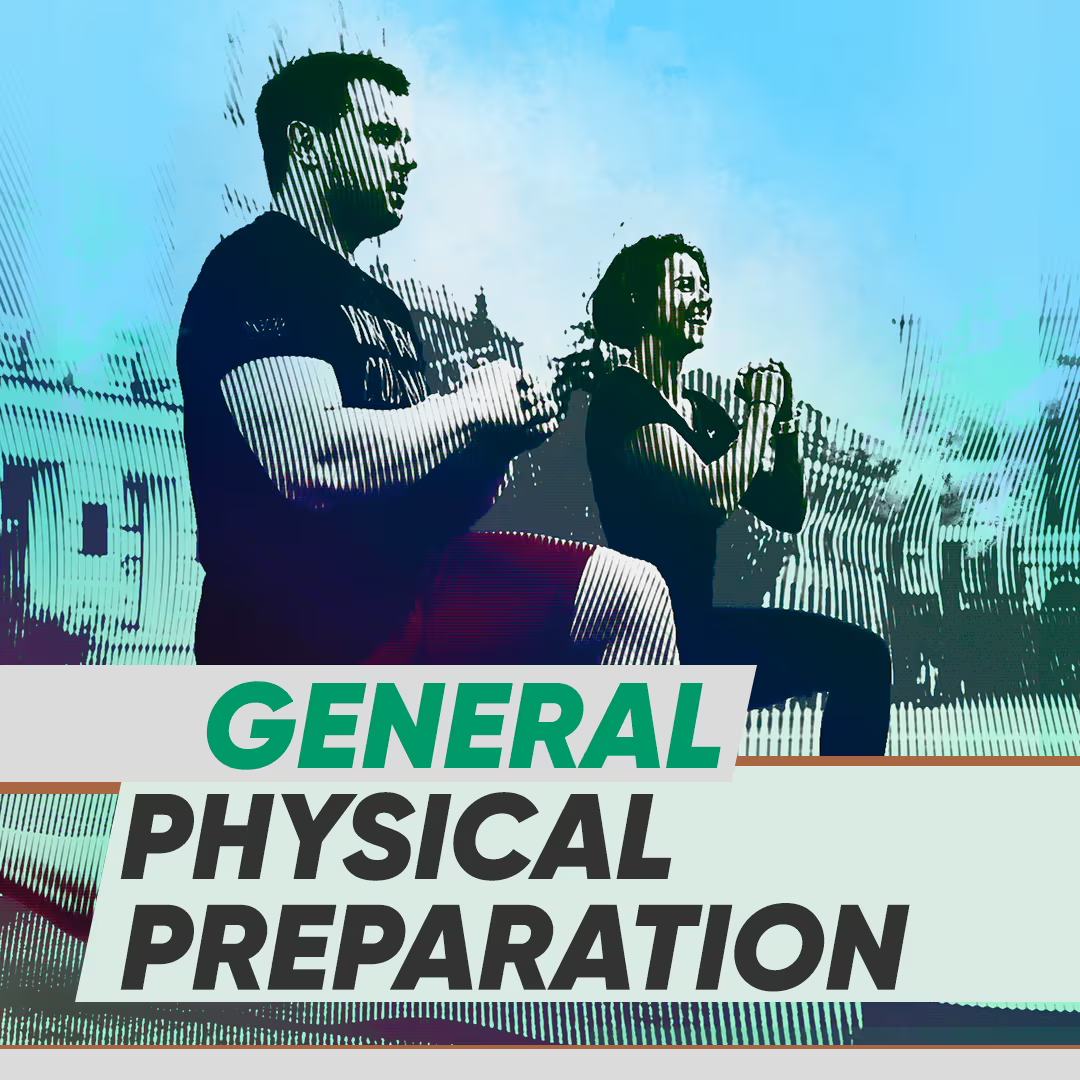Elbow Pain From Push Ups: Causes & Prevention
Author:
Reviewed by:
(21 years of Oly Lifting experience)
Unlock your full potential by engaging with our experts and community! Have questions about your fitness journey or looking for expert advice on weightlifting techniques? Don’t hesitate — leave a comment below and David Sasha Schulz will provide a personalized answer and insights to help you reach your goals.
Torokhtiy is reader-supported. Some links are affiliate links, and we may earn a commission at no extra cost to you. See our disclosure page for details.
Experiencing elbow pain from push ups? You don’t need to suffer in silence or give up your routine.
Discover what causes the pain, how to treat it, and the best techniques to prevent it from happening again. We’ll even show you the best variety of push ups to avoid pain.
Is It Possible To Eliminate Elbow Pain From Push Ups? Yes! You need to start by understanding how poor form might be causing your pain. We can help you with this, alongside dealing with the pain, correcting your form, and avoiding elbow pain from push ups in the future.

Intro To Elbow Pain From Push Ups
The push up is considered one of the best exercises to strengthen the muscles in your shoulder. Unfortunately, poor form when doing push ups is common, and may be a factor involved when pushups are causing someone pain in the elbow.
You should understand the physiology of push ups. It will help understand why form is so important and how you may develop elbow pain from push ups.
The standard push up requires you to lie on the floor in a prone position. Only your toes and your hands remain in contact with the floor throughout. Your hands should be palms down and directly under your shoulders.
You then simply push your body up with your arms while keeping your back straight, and then lower back to the starting position to complete one push up.
This simple process forces the triceps, pecs, and shoulders to work together, strengthening them. This movement also works the abdominals and spinal stabilizers, giving you some ‘core training’.
Your pecs are the major muscle used as you perform a push up. However, they aren’t the only muscles used. The deltoids, and triceps are also working hard, and the abdominals, back and leg muscles are working as stabilizers.
Interestingly, studies show that a low-load bench press will work many of the same muscles as push ups, specifically in the upper body. Push ups tend to offer additional benefits to bench presses by invoking the glutes, lower back, and abdominal muscles.
Unfortunately, many people suffer from elbow pain during push ups or find their elbows hurt after push ups.

What Causes Elbow Pain From Push Ups?
There are several reasons why you may feel elbow pain after push ups. Identifying the cause will help you prevent it from happening again.
1. Adding Volume/Intensity To Quickly
If you’ve been doing push ups for a while then you’re probably thinking about increasing the number or, some people may even consider adding weight.
However, trying to progress too quickly is likely to cause you pain or injury, and leave you wondering ‘why does my elbow hurt when I do push ups?’.
Your elbows are generally the weakest link in a push up, if you suddenly double the number you’re doing without good form you’re likely to overload your triceps. This may irritate your triceps tendon which will cause elbow pain after push ups.
In short, poor form, combined with overloading the number of push ups you do, or adding too much weight, is likely to damage the soft tissues around the elbows.
Follow us!

Free!
Get a 2-week Weightlifting Program as a bonus for the subscription to kickstart your training plan!

Free!
2. Failing To Warm Up
Before any exercise, it’s essential to warm up. While research is ongoing, the majority of studies have found that warming up decreases the risk of injury.
Failing to warm up increases the likelihood of elbow pain during push ups. Undertaking a simple warm-up routine allows a better connection between nerve and muscle, improving the efficiency of the motion.
It also increases the temperature of your muscles, effectively loosening them up for exercise. Alongside this, a warm-up will increase the amount of nutrients and oxygen available to your muscles. This ensures the muscles and tendons are ready and less likely to be injured.
3. Poor Form
To complete a push up properly you need the palms of your hands on the floor, usually slightly wider than your shoulders. At the lowest position, your chest should touch the floor. At the top position, your arms will be straight.
Poor form means that your hands or elbows aren’t in the right position in relation to your shoulders. For example; flaring your elbows as you move up and down, along with allowing your hips to sag mid press up.
The results of this are decreased or variable gains and may even carry an increased risk of shoulder or elbow pain, or potentially even injury if continued long enough.
Of course, elbow pain during pushups can be, and probably is, the result of a pre-existing issue.

How To Treat Elbow Pain From Push Ups?
In most cases, you’ll first experience elbow pain as you exercise or straight afterwards. There are several presentations of elbow pain:
- Pain in your elbow when you bend or straighten your arm
- Your elbow aches and feels generally sore, especially after doing push ups
- It may feel like your elbow is on fire
- If your elbow joint looks red and swollen, the issue is more serious and you should seek medical assistance.
The recovery process is different for everyone, it can take days, weeks, or months depending on the severity of the injury.
- Stop all exercises that aggravate the pain significantly
- Continue non painful exercises, at a lower intensity/volume to allow recovery
- Ice the area for 20 minutes several times daily for pain relief, use painkillers if needed
- Gently massage the area surrounding your elbow to help relieve the pain.
How To Do Push Ups Without Hurting Your Elbows?
While elbow pain from push ups can be frustrating, it can be avoided or prevented in the future. If pushups are very painful, it is probably a good idea to stop push ups temporarily and let your elbow heal.
Then, when you’re ready, you can start again, without worrying about pain in your elbows. Just use the following tips to prevent your elbows hurting after push ups.
1. Follow a proper program/progression
What constitutes a proper program or progression will depend on many factors specific to each individual. It is best to hire a coach to design your program for you, but there are many good programs that are less expensive or even free.
2. Warm Up First
Always warm-up your body before any exercise, that includes doing push ups. It doesn’t need to take long but it will help your form and reduce the risk of elbow pain.
3. Maintain Your Form
The standard push up requires your hands to be shoulder-width, or slightly wider, apart. Keep your fingers spread and make sure your elbows stay at a 45° angle or less from your body while completing each push up.
Focus on form over reps or even the depth of your push up. That will come with practice.
It’s essential that, when you start push ups again, you keep your rep rate low. Increase it slowly to reduce the risk of repeat injuries.
4. Rest
When you want to see results it’s tempting to do push ups daily. However, In order to gain strength you need to cause microscopic tears in your muscles. The healing process is what makes your muscles bigger and stronger.
Rest is essential for the healing process to work. That’s why experts recommend you wait 48 hours before exercising the same muscle group. You may be able to train more frequently depending on your experience level and programming.
Resting between sessions will help your body repair and reduce the likelihood of painful injuries.
What Push Ups Are Better/Recommended For People With Elbow Pain?
There are several push ups you can do while suffering from elbow pain.
1. Tempo Pushup
Use whichever hand position is most comfortable. Take 3 seconds or longer to lower yourself to the bottom, then push up in about 1-2 seconds depending on comfort. Slower tempo (and therefore somewhat lighter load) exercise is generally better tolerated than heavy or explosive training.
2. Wide Grip Push Ups
Instead of adopting the standard pose for your push up, keep your hands in line with your shoulders but move them further out from your body. This decreases the load on your elbow and helps prevent or reduce pain.
You can also switch exercises. The following target the same muscles while reducing the likelihood of elbow pain.
- Dumbbell Press
- Barbell Bench Press
- Cable Press
FAQ
Should I Do Push UPS With Elbow Pain?
If you find the pain is mild or improves as you warm up,you can probably continue with your workout as planned or with slight modifications.
If the pain is intense or gets worse as you warm up/exercise, you could try modifying your exercise technique or exercise selection. If the pain is significant you may want to seek professional help instead. Naturally, if the elbow pain is a result of a traumatic injury you should seek medical assistance immediately, you shouldn’t be exercising at all.
Will Tennis Elbow Go Away?
Yes. It can take weeks or months for the elbow to completely heal, but it should heal by itself. You will need to decrease the intensity and/or volume of training to allow proper healing. Seek medical help to determine how much that is.
Conclusion
Elbow pain from push ups is frustrating. It disrupts your schedule and progress. However, your new understanding of the causes of elbow pain will help you recover faster and prevent pain in the future.
Contact us today for more advice and let us know if you have any more questions!
Also read:
- Bench Press Elbow Pain: Causes, Treatments And Tips
- What Are Elbow Mobility Exercises? Everything You Need to Know
- Elbow Pain From Curls: Causes, Treatments and Tips
- Strong Arms, No Pain: Tackling Elbow Discomfort from Weightlifting
- Elbow Pain from Pull Ups: Reasons and Solutions
References:
- San Juan, J. G., Suprak, D. N., Roach, S. M., & Lyda, M. (2015). The effects of exercise type and elbow angle on vertical ground reaction force and muscle activity during a push-up plus exercise. BMC Musculoskeletal Disorders, 16(1). https://doi.org/10.1186/s12891-015-0486-5
- Kikuchi, N., & Nakazato, K. (2017). Low-load bench press and push-up induce similar muscle hypertrophy and strength gain. Journal of Exercise Science and Fitness, 15(1), 37-42. https://doi.org/10.1016/j.jesf.2017.06.003
- Fradkin AJ, Gabbe BJ, Cameron PA. Does warming up prevent injury in sport? The evidence from randomised controlled trials? J Sci Med Sport. 2006 Jun;9(3):214-20. doi: 10.1016/j.jsams.2006.03.026. Epub 2006 May 6. PMID: 16679062.
- McGowan CJ, Pyne DB, Thompson KG, Rattray B. Warm-Up Strategies for Sport and Exercise: Mechanisms and Applications. Sports Med. 2015 Nov;45(11):1523-46. doi: 10.1007/s40279-015-0376-x. PMID: 26400696.
- Krzysztofik, M., Wilk, M., Wojdała, G., & Gołaś, A. (2019). Maximizing Muscle Hypertrophy: A Systematic Review of Advanced Resistance Training Techniques and Methods. International Journal of Environmental Research and Public Health, 16(24). https://doi.org/10.3390/ijerph16244897
Why Trust Us?
With over 20 years in Olympic weightlifting, strength training, nutrition coaching, and general fitness our team does its best to provide the audience with ultimate support and meet the needs and requirements of advanced athletes and professional lifters, as well as people who strive to open new opportunities and develop their physical capabilities with us.
By trusting the recommendations of our certified experts in coaching, nutrition, and sports training programming, as well as scientific consultants, and physiotherapists, we provide you with thorough, well-considered, and scientifically proven content. All the information given in the articles concerning workout programming, separate exercises, and athletic performance, in general, is based on verified data.
The product testing process is described in more detail here.
Author: David Sasha Schulz
Doctor of Chiropractic, BSc Human Biology, CSCS
Strength coach (CSCS) – 10 years
Sasha is a Chiropractor and Kinesiologist practicing in Kelowna, BC, Canada. He has been practicing Chiropractic since 2019, integrating manual therapy, strength training and programming principles, and nutritional strategies to get his patients optimal results. He currently scratches the competitive itch in fitness, and the occasional endurance race, and plays golf and snowboards for fun. He has an interest in all strength and fitness-related sports.
Reviewed by: Oleksiy Torokhtiy
Olympic Weightlifting Champion, PhD in Sport Science
Best Results: Snatch – 200 kg,
C&J – 240 kg
Oleksiy Torokhtiy is a professional athlete boasting 20 years of experience in Olympic weightlifting. With multiple European and World titles under his belt, he has showcased his prowess in two Olympic Games (Beijing 2008 and London 2012). Upon concluding his illustrious career, Oleksiy dedicated himself to coaching. By 2022, he had conducted over 200 weightlifting seminars worldwide. He is the visionary behind an international sportswear and accessories brand known for its motto, “Warm Body Cold Mind.” Additionally, he is an esteemed author and the creator of a series of training programs and eBooks.





Still have questions after reading our article? Unlock your full potential by engaging with our experts and community! Don’t hesitate — leave a comment below and David Sasha Schulz will provide a personalized answer and insights to help you reach your goals.